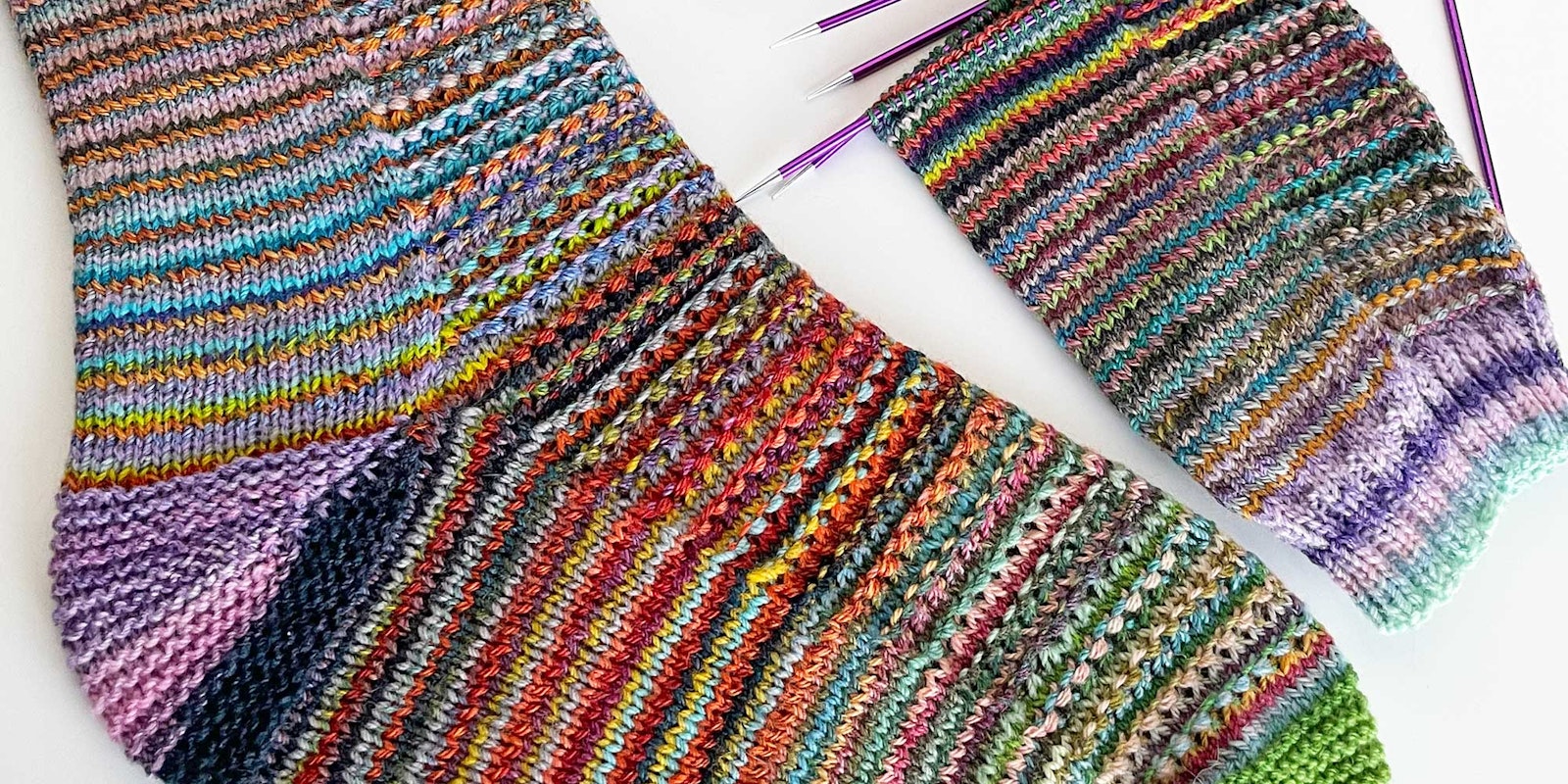Pattern and designer Oddments by Zoei Proulx.
Fiber/preparation Leftovers from five different sock skeins, all superwash Merino or superwash Merino/nylon blends by A Thing for String Fiberworks, Wound Up Fiber Arts, Fully Spun, and Slothy Creations. Renee stripped the tops into four sections, threw all those small bits into a bag, and picked out colors randomly, with one predraft pass before joining.
Wheel system/spindle Most were spun on an Electric Eel Nano 1.1 and plied on a Lendrum folding wheel.
Ratio 19:1 on the Lendrum and the speed dial set between 80% and 100% on the Nano.
Drafting method Worsted-style, short-backward draft.
Singles direction S-twist.
Singles wraps per inch 40.
Ply wraps per inch 20.
Yards per pound Ranged from 1,670 to 2,560.
Yarn classification/weight Fingering to light fingering.
Yardage used 360 yards total.
Needles Size 1 (2.25 mm) and 1.5 (2.5 mm) double-pointed.
Gauge About 8 stitches/inch and 14 rounds/inch over stockinette sections.
Finished size US women’s size 10.
I first became interested in spinning after reading the Yarn Harlot blog (author Stephanie Pearl-McPhee) and was helped along in the process when my local yarn store started carrying pencil roving that I could spin easily on my starter spindle. I’ve been spinning since about 2008 and knitting since I learned as a child in 1995, and I’m also a seasoned crocheter and sewist. My favorite aspect of spinning is getting to play with color. I love all the different ways to spin a gradient, how a marled yarn will give hues depth by incorporating colors in different plies, and more. I love that I don’t always know how the stripes will work up or the colors will fall, making it still a little bit of a surprise to knit handspun yarn.
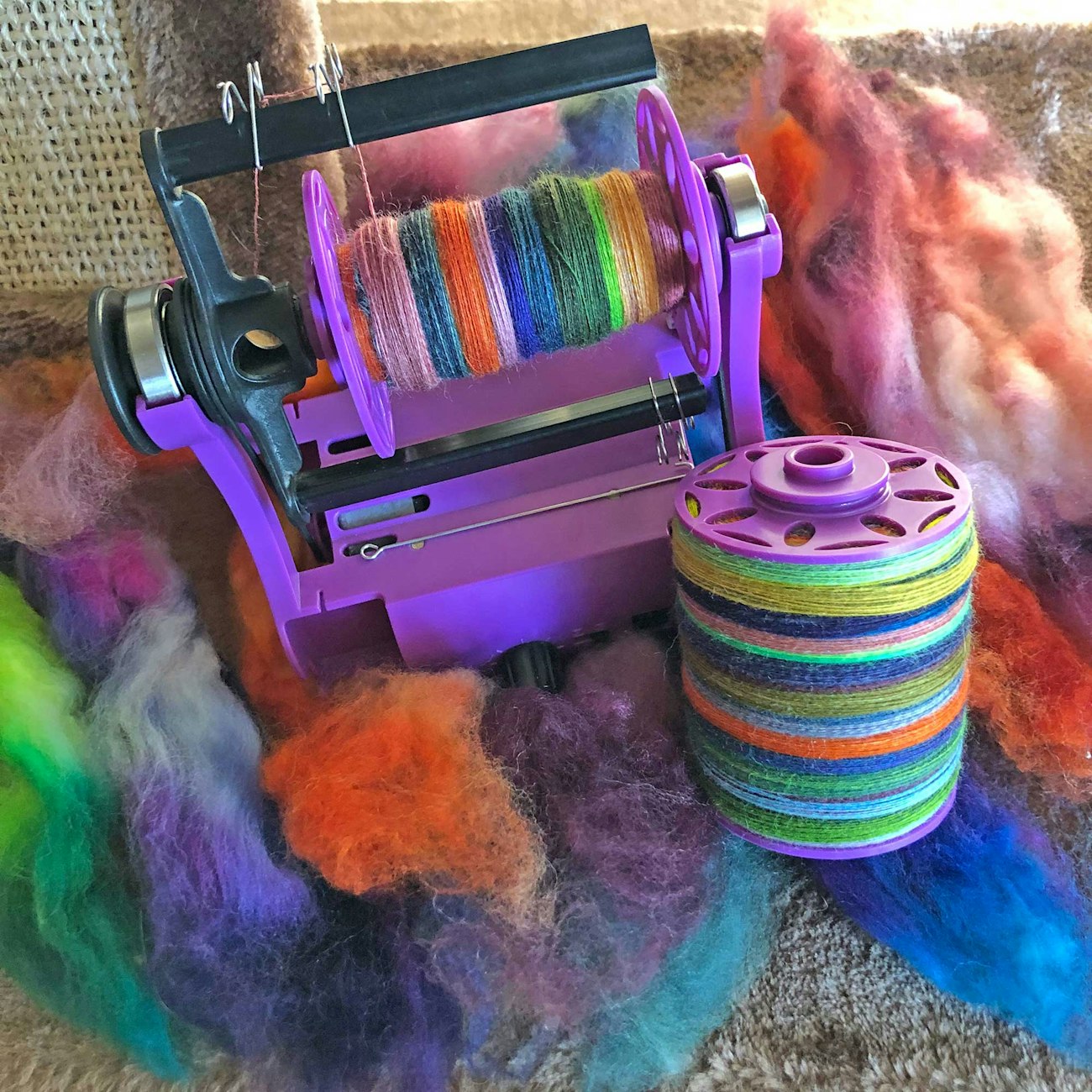 Yarns spun from “scrappy” fiber: sets of many separate bits of roving that dyers put together for supercolorful spins.
Yarns spun from “scrappy” fiber: sets of many separate bits of roving that dyers put together for supercolorful spins.
I participate in the Socks from Stash group on Ravelry, where members earn points each month for knitting socks that fit the monthly challenge. The challenge for March 2023 was to knit socks that were our “Happy Place”—socks that were a favorite color, from a special skein, or something else that made the knitter particularly happy. Handspun is absolutely my favorite to knit with, and these colorful scrappy yarns are really addicting to spin and knit. Getting to use several scrappy yarns together for really wild socks was definitely my happy place.
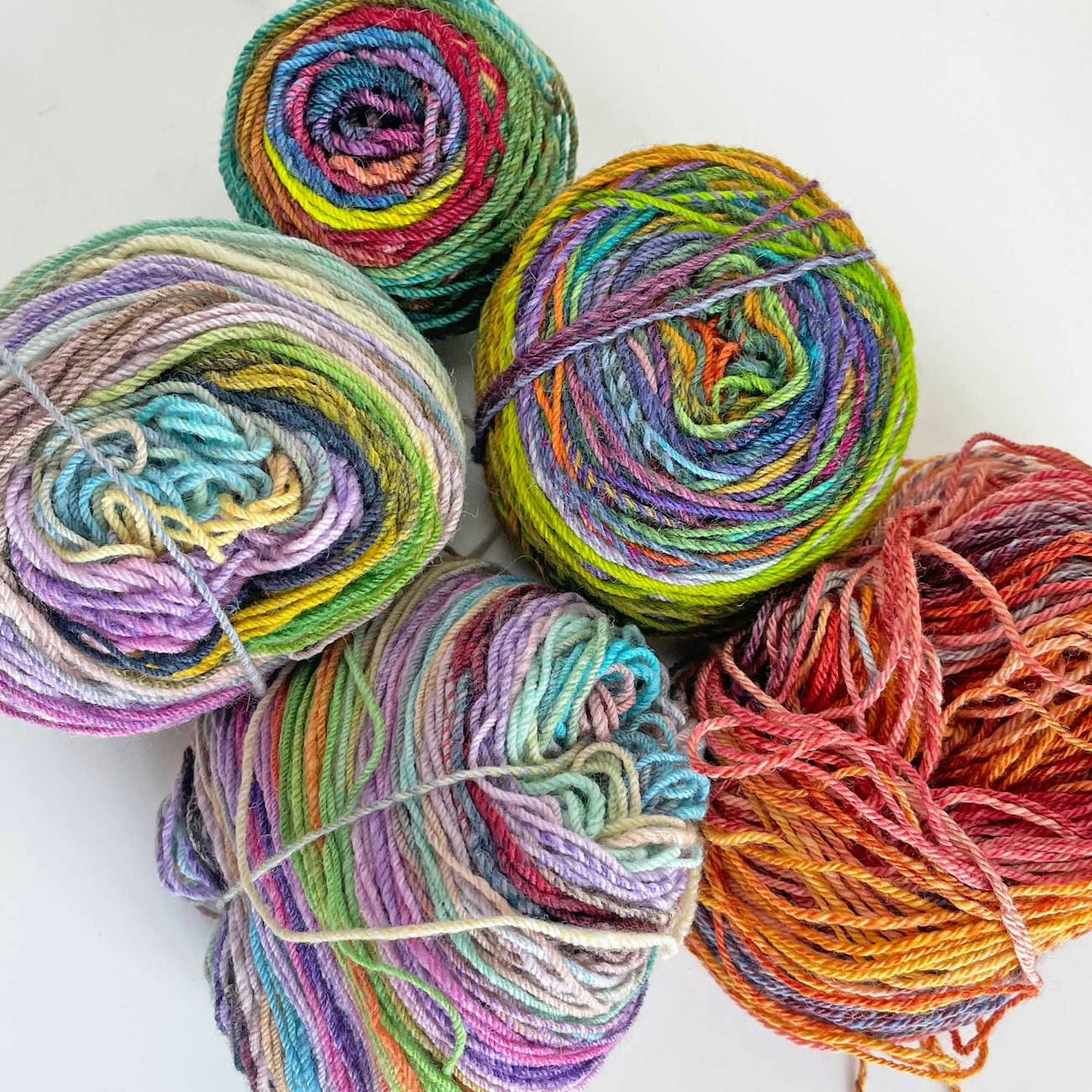 Leftovers from five different socks went into this pair.
Leftovers from five different socks went into this pair.
For the cherry on top, I also love helical knitting, where yarns used for one-row stripes are not crossed at the beginning of the round, allowing each yarn to continue its spiraling path without a jog in the color. The Oddments pattern was written specifically for helical knitting and included a bit of texture for interest. I made one modification to add a mini gusset before and after the heels for a better fit, and another to add a few stitches in the total circumference. For the hundreds of socks that I have knitted, somehow this pair was the first with a garter-stitch heel and toe. I discovered I really enjoyed the faster rhythm of knitting them, and they feel cushy when worn.
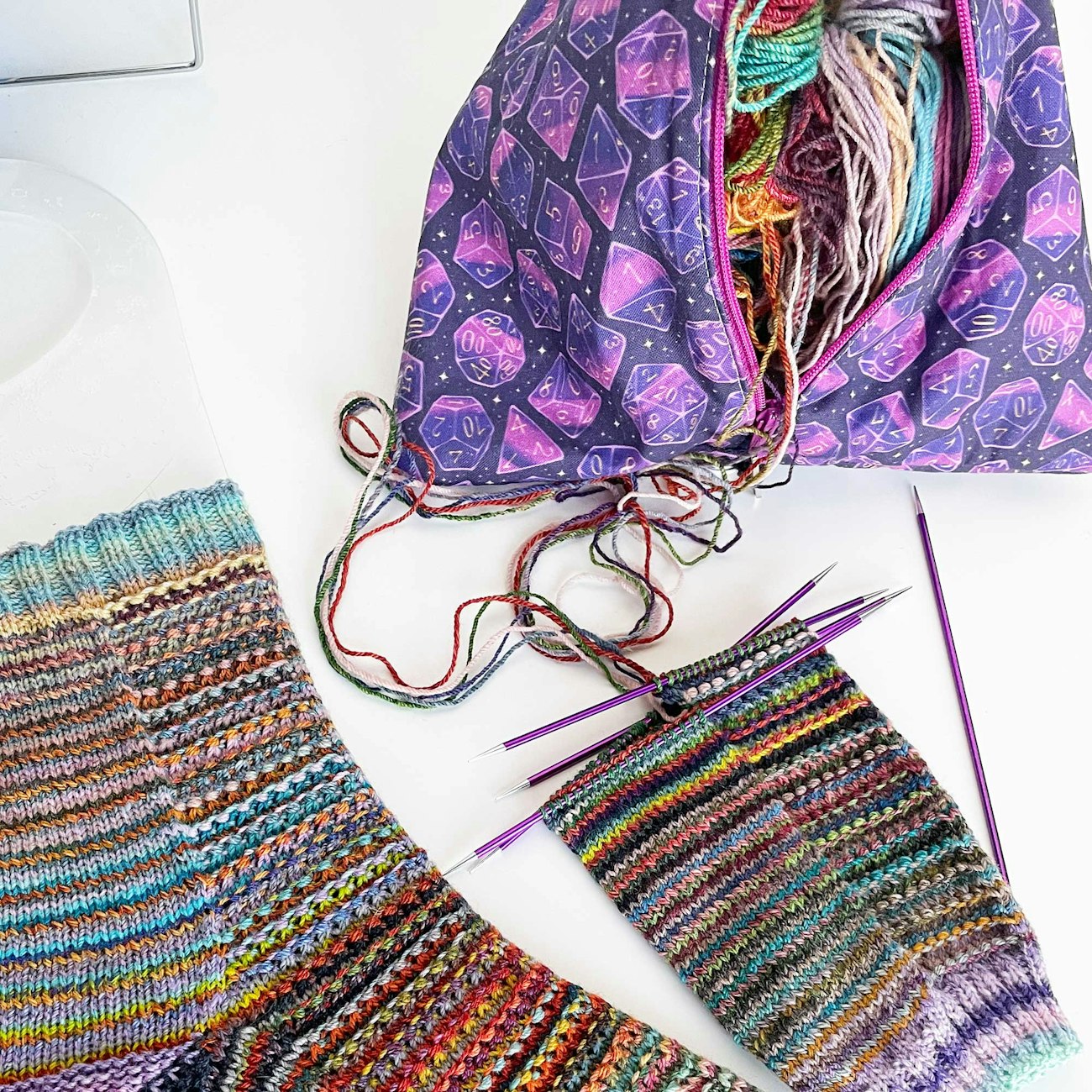 Keeping the yarn balls secure in a container prevents the strands from tangling.
Keeping the yarn balls secure in a container prevents the strands from tangling.
The only challenge was keeping all the helical strands of yarn from getting twisted. My previous helical experience taught me that as long as the yarn balls are secured in a container, I won’t accidentally cross the yarns when switching colors. An occasional twist of the sock project in the opposite direction from usual will keep it all neat.
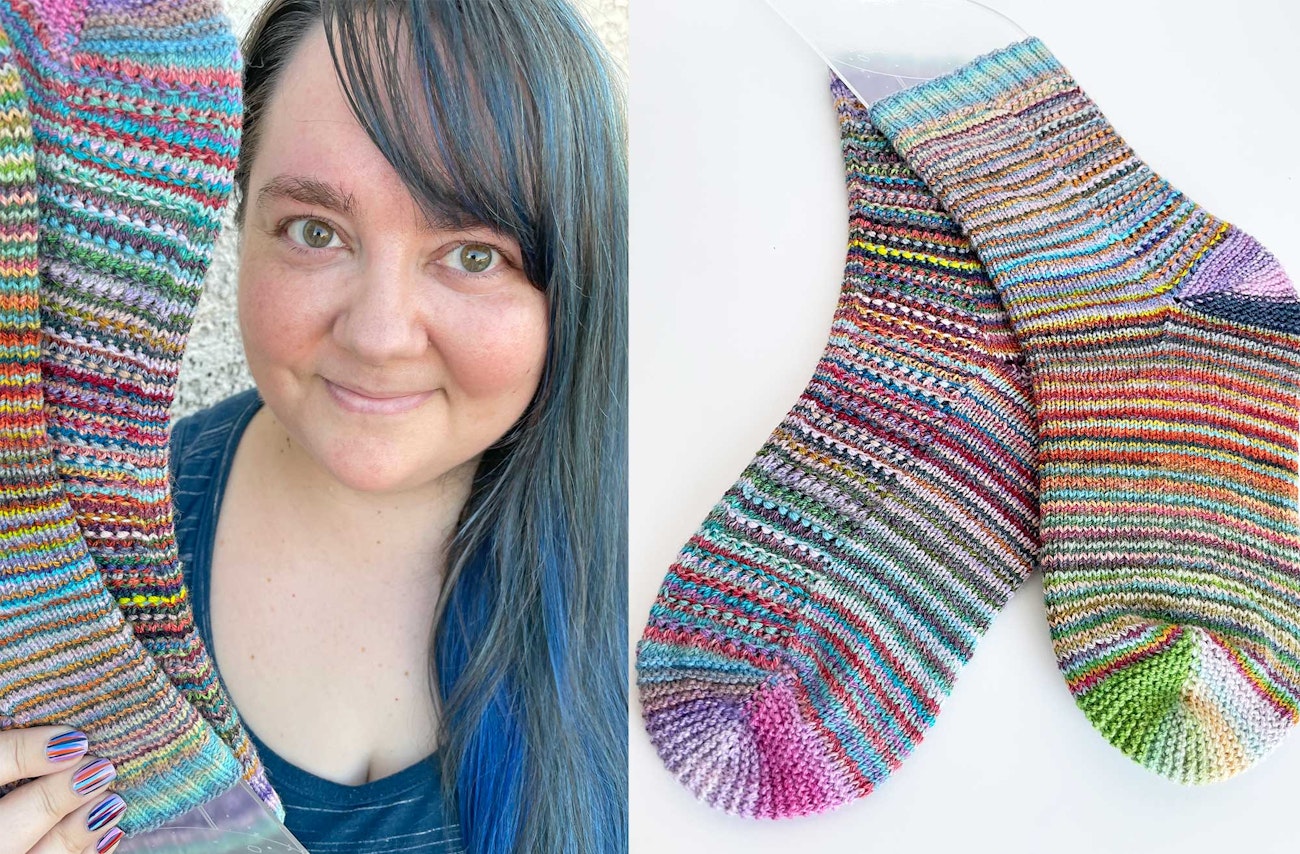 Renee with the finished pair of scrappy socks—and nails to match!
Renee with the finished pair of scrappy socks—and nails to match!
Superwash Merino and Merino/nylon blends are my go-to for spinning socks. While Merino isn’t the hardiest fiber and may not last as long as stouter wools, it is most easily found with superwash properties—something that’s crucial since I knit socks mostly to give away to family and friends. The inclusion of nylon helps with longevity, but also being able to spin a Merino yarn with short draw and a tight twist helps. My worsted-spun socks have rarely found their way into my darning pile.
Have a finished object to share? Tell us about it by sending us an email here.
In addition to making socks, Renee Strouts also delights in tabletop gaming and really bad movies. She can be found spinning, knitting, crocheting, and designing on Instagram as @rmaliase.

